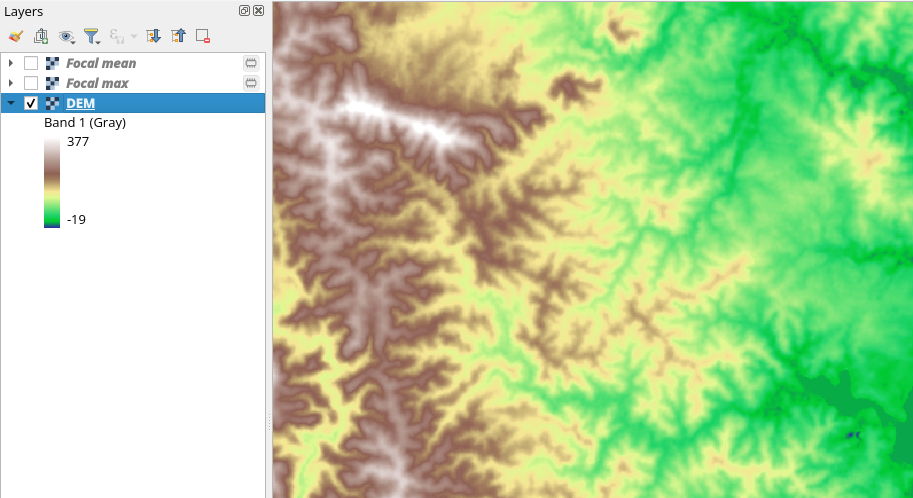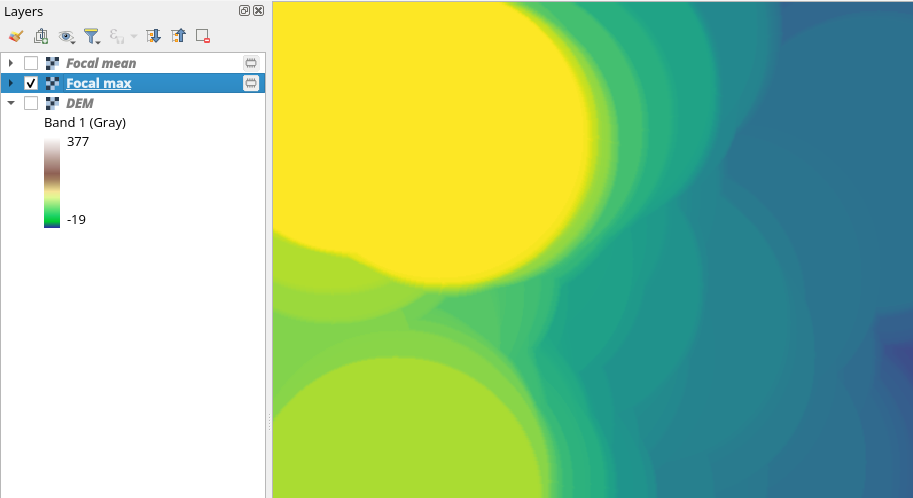Based on the instructions on how focal stastics work: https://pro.arcgis.com/en/pro-app/latest/tool-reference/spatial-analyst/how-focal-statistics-works.htm, I had expeced a more continuous result than what the output provides:
Instead of the neighbourhood determining the value of the focal cell it seems like the focal cell determines the values of the neighbourhood. Or it perhaps a result of the latest calculation overwrites the calculations of nearby cells?
The yellow-red scale is the input raster, and blue-white is the result of focal statistics. The input raster is integers, and it should find the maximum in a circular neighbourhood with 2000 cells radius, with Ignore NoData set to true. I can understand observing circular patterns near the borders, but not in the middle of raster.
EDIT: added screen shots per commenters request. First image is of the settings used, the second is a screen shot showing the layers and their legend as shown in the contents pane.






